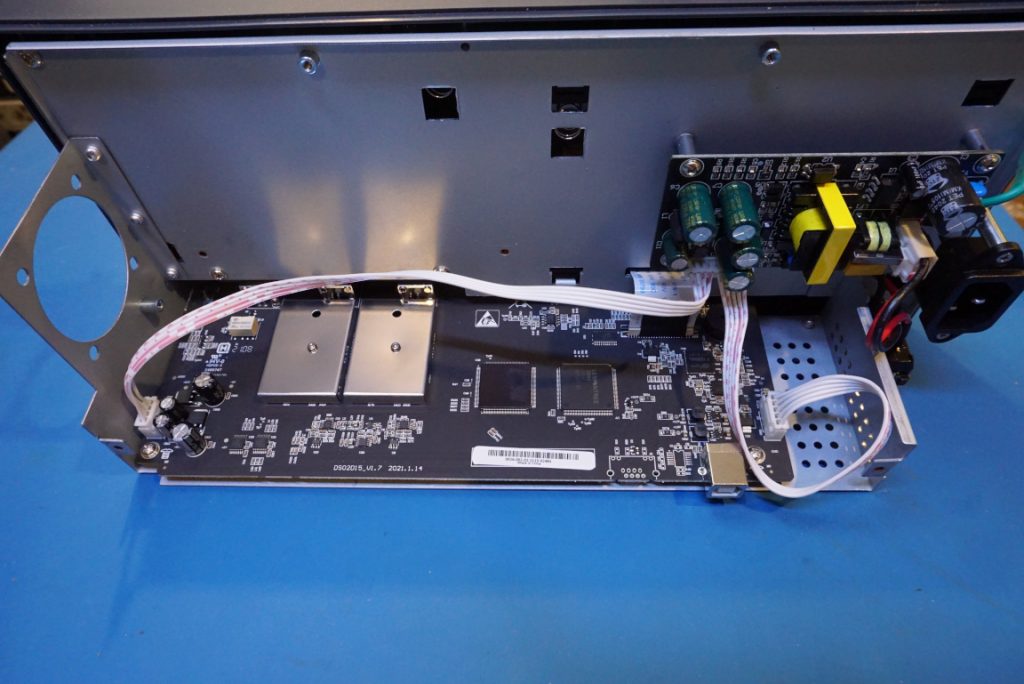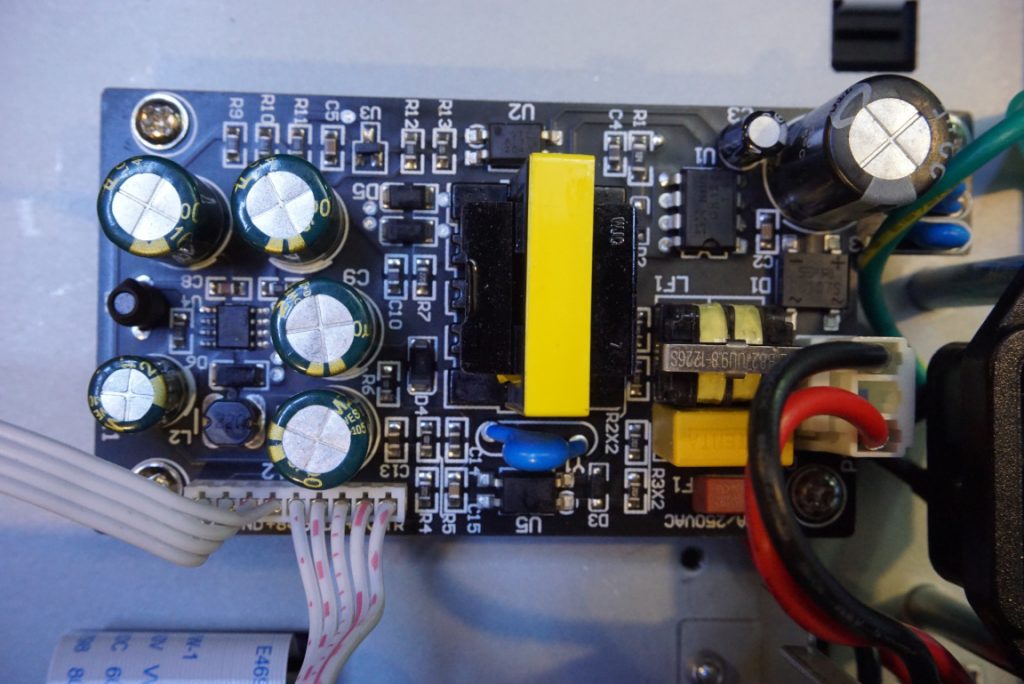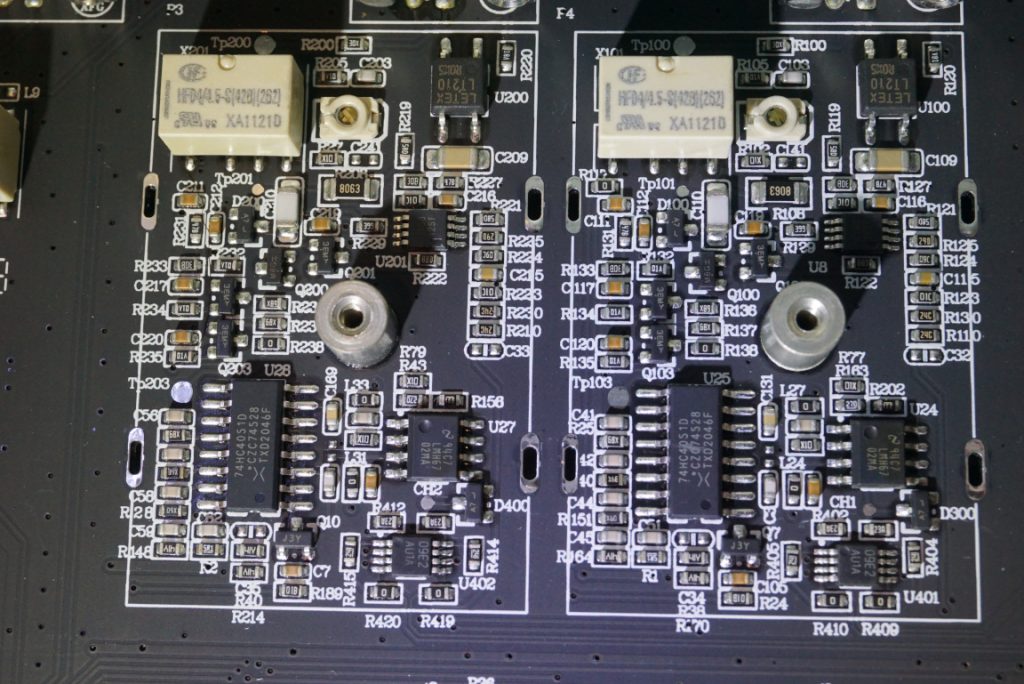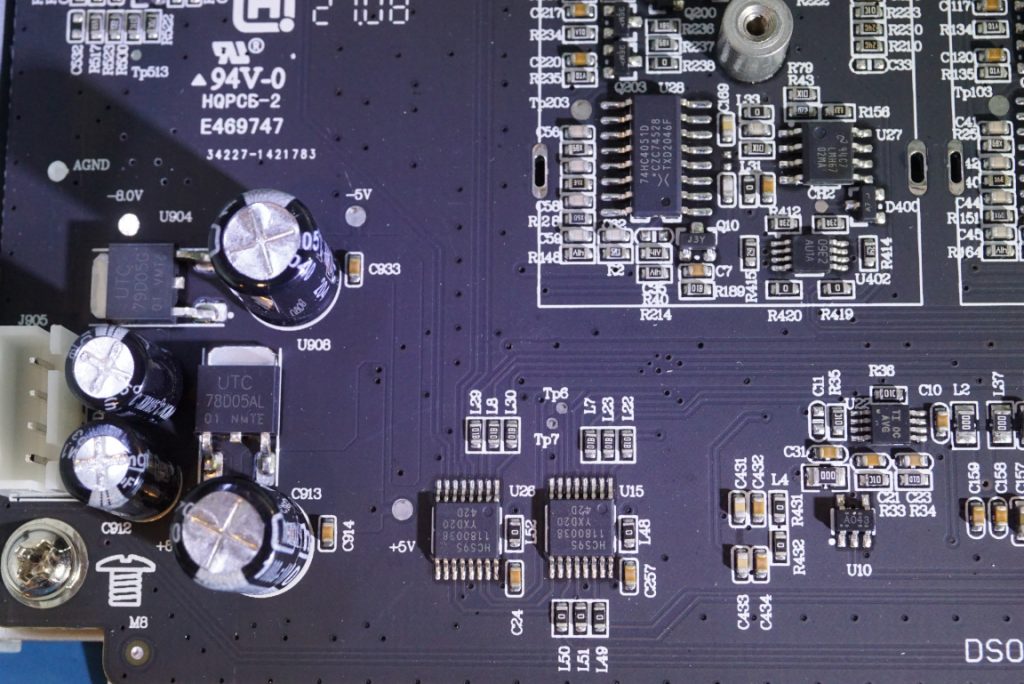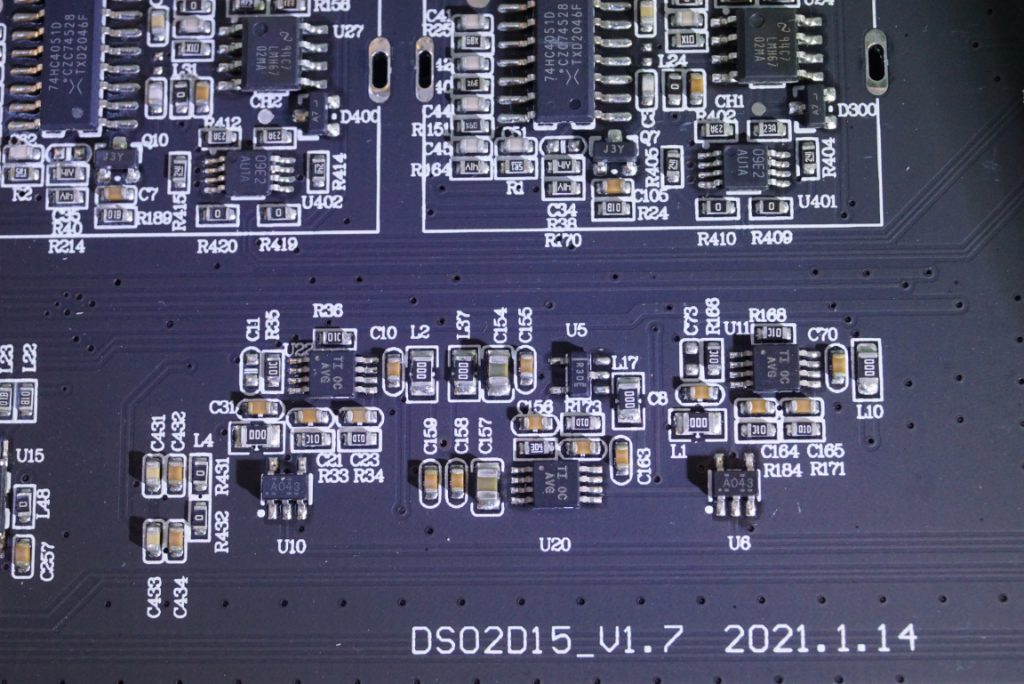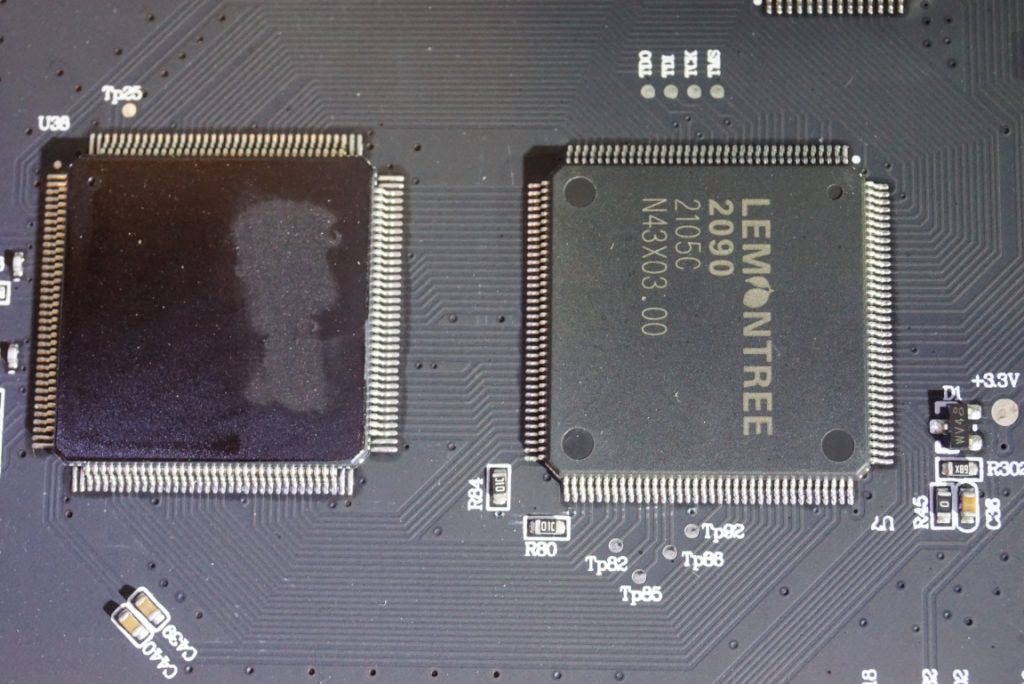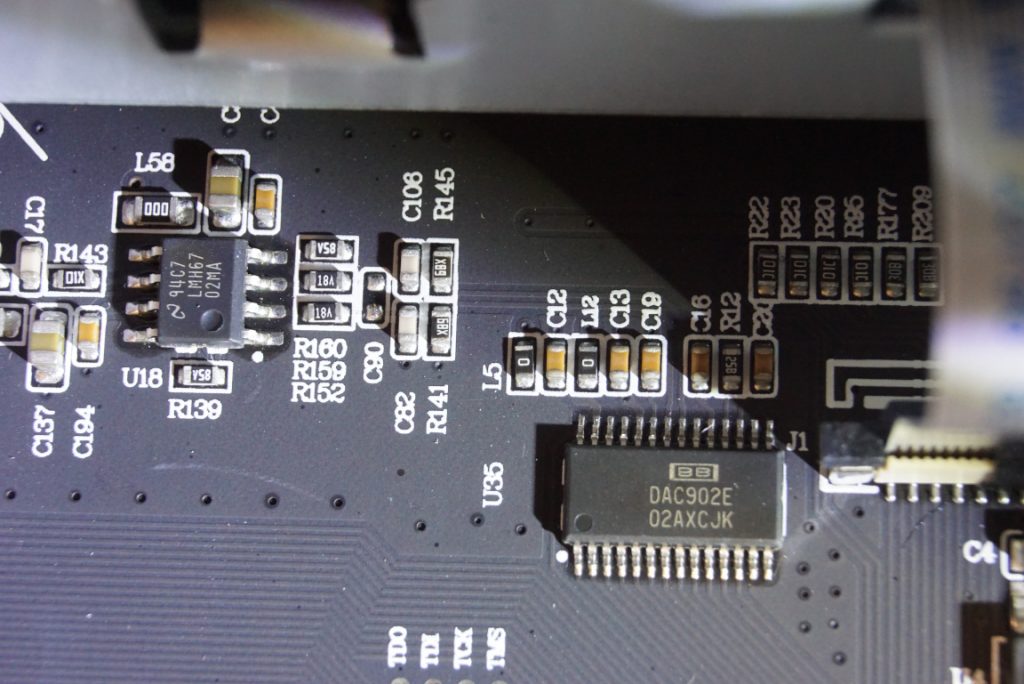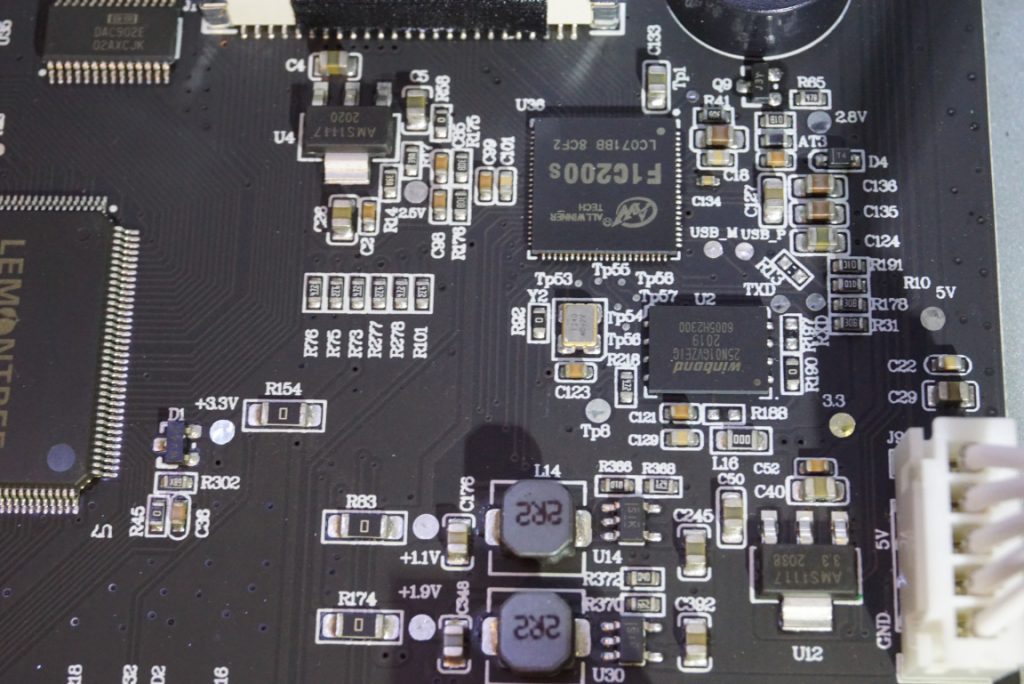The DSO2000 series is the latest entry-level digital storage oscilloscope from Hantek. The DSO2D10 version I reviewed (see video linked below) is a dual-channel 100MHz, 1GSa/s 8M sample memory depth scope that sports protocol decoding capability and a single channel 200MSa/s arbitrary waveform generator. In this blog post, I will share some of the teardown pictures and take a closer look.
The first thing you will notice is that although there is a mounting plate for a fan, this unit does not actually have one. This contributed to the super quiet operation.
The power supply board utilizes a DK124 offline switching controller. It generates the required 5V and ±8V for the digital and analog circuitry.
The input sections are shielded for each of the input channel. The shielding is not soldered onto the main board but rather screwed on via a single screw. This made it possible to easily remove the shielding covers.
The input section for each channel looks to be identical. Each input section contains a relay for range switching and a LETEX LT210 solid state relay. A 74HC4051 multiplexer/demultiplexer is used for bi-directional signal switching. The input OpAmp used is a LMH6702 which has a bandwidth of 1.7 GHz.
Here are a couple of pictures showing the circuitry in the vicinity of the front end input sections. To the left you can see a couple of linear regulators that regulates the ±8V from the switching power supply to the ±5V used by the OpAmps. In the picture to the left below, you can also see a couple of 74HC595 shift registers.
The main FPGA/ASIC used in this oscilloscope can be seen below, Unfortunately, one of the chip has its markings sanded off and I could not find any information on the other LEMONTREE branded chip either.
The DAC used for the arbitrary waveform generation is a DAC902E 12 bit, 165MSPS digital-to-analog converter, the same DAC used in the handheld 2D72 Hantek scope meter I reviewed a while back. Again, the output OpAmp for the AWG is also an LMH6702.
The processor used in the DSO2D10 is a F1C200s, which is a 32 bit processor based on the ARM9 CPU architecture. A winbond companion flash memory chip can also be seen in the picture.
